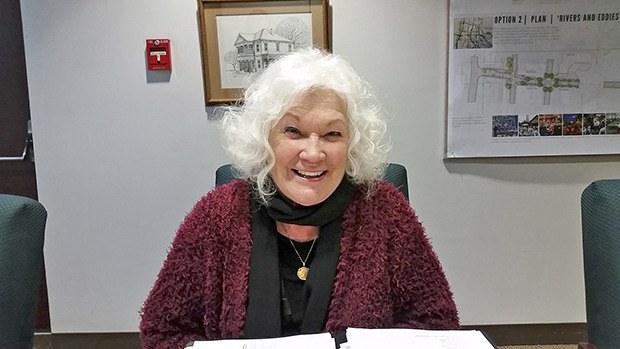While compiling her recent report on homelessness for Mayor Nancy Backus, Pat Bailey heard a lot about what it is doing to Auburn businesses.
How things have gotten much worse over the last few years.
From the apartment manager, who, frustrated by homeless finding their way into his building at night despite security measures, threw up his hands in exasperation and said: “I’m too old for this!” to the businessman who cut down the vegetation behind his store to keep people from sleeping there.
Yet, as Bailey, the City’s community healthcare consultant, knows very well, the affect the homeless population is having on business is only one facet of a multi-sided, complex problem.
To glean more, a friend advised Bailey, get yourself to McDonald’s on Auburn Way South at about 6 a.m., and talk to some of the people who hang out there.
“They were very talkative, very, very engaging,” Bailey said of the middle-aged man, the 18-year-old and the young couple she met. “They told me about living on the streets, the difficulties they faced, and what we don’t have here in Auburn. I wanted to know if there was a solution, and what the City could do to help.”
The man said the homeless in Auburn fit into three broad categories.
For starters, he said, there’s the chronic homeless person like him: has a job, makes enough money to pay for food and clothes but does not earn enough to pay for a place to live. And without enough overnight beds in Auburn, a person like that has nowhere to go.
Next, is the acute homeless: the woman who has lost her job, her house, has no friends or relatives and is out on the street; the mentally ill; the teenager kicked out of the house, the abused.
The third category is composed of 15 to 20 men, some of whom take and sell drugs, are violent and are known to harass others.
It’s ‘cool’
The young homeless man described a fourth category: people in their late teens to early 20s, like he is, who think homelessness is “cool.”
What surprised Bailey was that the guy had a home and family in Seattle he could turn to. As she recalled, he said: “Yeah, I got beat up once and got my nose broken,” before adding that that was the “cool” part.
“You get to tell people you live on the streets, and that you got beat up and survived. That seemed rather strange to me,” Bailey said.
But as Rebecca Roy of the South King County Homeless Coalition told Backus’ Task Force on Homelessness Tuesday evening, “Going from house to homeless, the No. 1 cause of homelessness that we know of, really, is the inability to secure affordable housing. A lot of times people say ‘affordable housing, affordable housing,’ but they don’t define what that is. But the most acceptable definition is anybody who is paying 30 percent of their annual income, 30 percent is considered affordable housing.”
Best ways
Bailey also wanted to know what are the best ways to deal with a problem that is in no way limited to Auburn.
“One thing many of the homeless said is if you just have a shelter at night and the facilities that go with it … “
The program Bailey found and studied, called Housing First, was established in 2004 in Salt Lake City, Utah.
“Their philosophy is that if you can put something decent over people’s heads — not rat-infested, not crummy living, but something decent over their heads – and along with that, some services to help them get better, their demeanor and everything else changes. And they want to try to be better,” Bailey said. “Housing First told me that between 2004 and 2014, they reduced their homeless population by 78 percent. Now, I have to add that there was a lot of money donated in Salt Lake City, and that made a very big difference.”
Bailey studied other facilities in the area in terms of housing. Auburn Youth Resources is wonderful, she said, but because of some legislative issues they told her they can’t take care of anybody under 18 or older than 24.
Vine Maple Place in Maple Valley is primarily for women and families and has a good reputation.
She talked as well to people at the Tacoma Health Department who are working with the homeless.
“They told me about Nativity House. It’s just up from downtown Tacoma in a residential area. It’s a brand new, rectangular building, takes up probably half a block, and one of the case managers gave me a tour. I said, ‘If we could bring this to Auburn, it would take care of a lot,'” Bailey said. “At the time I was there, although I think it’s increased in male beds, they had 117 overnight beds for males and 50 female and 51 bedroom apartments and along with this they have the social services. … It seemed very efficient.”
Top priority
Bailey said though some of the above ideas may not suit Auburn, Backus is serious about getting something done.
“It’s a top priority on her list,” Bailey said.
And business owners want to be in on any solution.
“You can just feel, and hear and see the frustration on business people’s faces when you talk about it. But they want to help. That’s one of the things about the people of Auburn,” Bailey said. “I have worked here in Auburn for 37 years, and I have known a lot of people. The people of Auburn really want to help. It’s a ‘just tell me how to do it’ sort of thing.”


